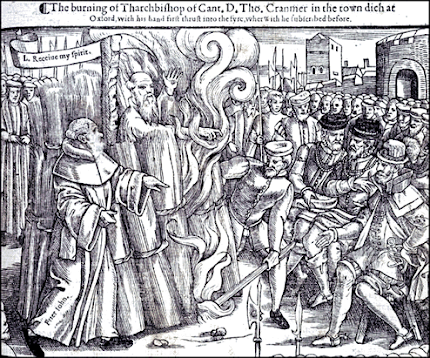6. The very form of the death embodies a striking truth. The cross was cursed not only in the opinion of men, but by the enactment of the Divine Law. Hence Christ, while suspended on it, subjects himself to the curse. And thus it behoved to be done, in order that the whole curse, which on account of our iniquities awaited us, or rather lay upon us, might be taken from us by being transferred to him. This was also shadowed in the Law, since אשמות, the word by which sin itself is properly designated, was applied to the sacrifices and expiations offered for sin. By this application of the term, the Spirit intended to intimate, that they were a kind of καθαρμάτων (purifications), bearing, by substitutions the curse due to sin. But that which was represented figuratively in the Mosaic sacrifices is exhibited in Christ the archetype. Wherefore, in order to accomplish a full expiation, he made his soul to אשם, i.e., a propitiatory victim for sin (as the prophet says, Is. 53:5, 10), on which the guilt and penalty being in a manner laid, ceases to be imputed to us. The Apostle declares this more plainly when he says, that “he made him to be sin for us, who knew no sin; that we might be made the righteousness of God in him,” (2 Cor. 5:21). 1.
7. . . . This is the first fruit which his death produced to us. Another is, that by fellowship with him he mortifies our earthly members that they may not afterwards exert themselves in action, and kill the old man, that he may not hereafter be in vigour and bring forth fruit. An effect of his burials moreover is that we as his fellows are buried to sin. For when the Apostle says, that we are ingrafted into the likeness of Christ’s deaths and that we are buried with him unto sin, that by his cross the world is crucified unto us and we unto the world, and that we are dead with him, he not only exhorts us to manifest an example of his death, but declares that there is an efficacy in it which should appear in all Christians, if they would not render his death unfruitful and useless. Accordingly in the death and burial of Christ a twofold blessing is set before us—viz. deliverance from death, to which we were enslaved, and the mortification of our flesh (Rom. 6:5; Gal. 2:19, 6:14; Col. 3:3). 2.
1. Calvin, J., & Beveridge, H. (1996). Institutes of the Christian religion (electronic ed.) (II, xvi, 6). Oak Harbor, WA: Logos Research Systems.
2. Calvin, J., & Beveridge, H. (1996). Institutes of the Christian religion (electronic ed.) (II, xvi, 7). Oak Harbor, WA: Logos Research Systems.




No comments:
Post a Comment